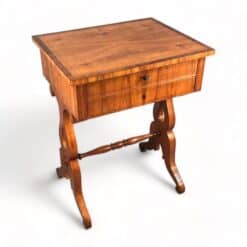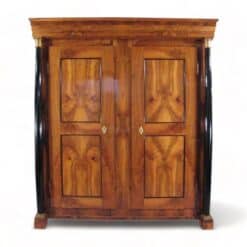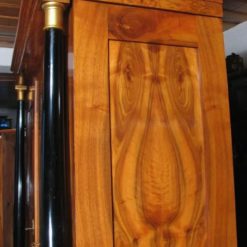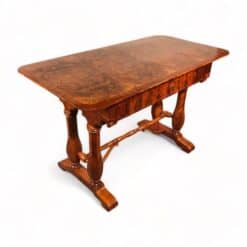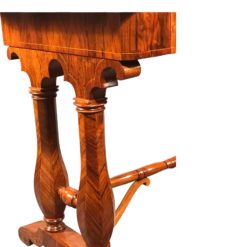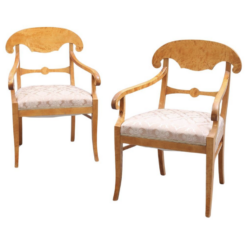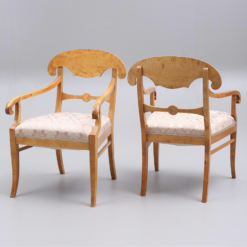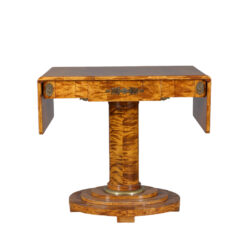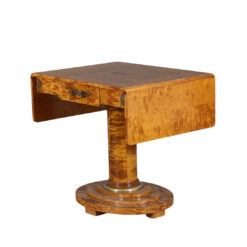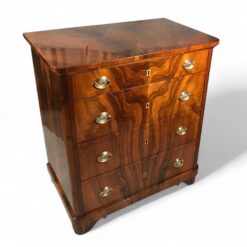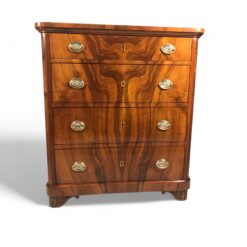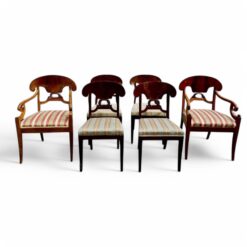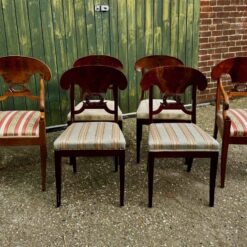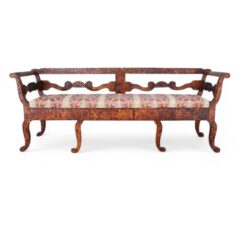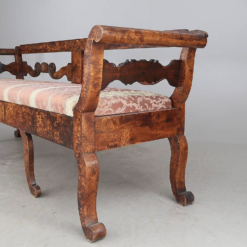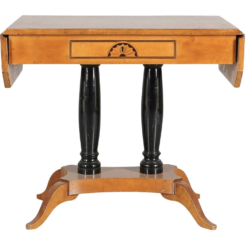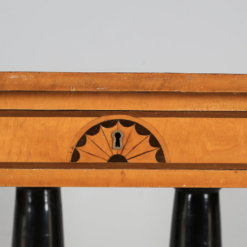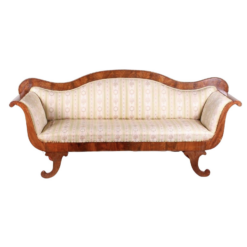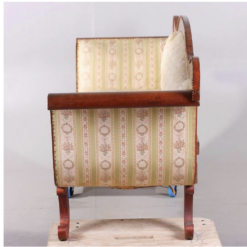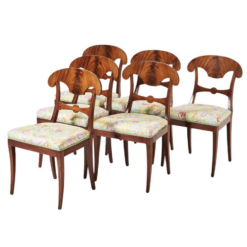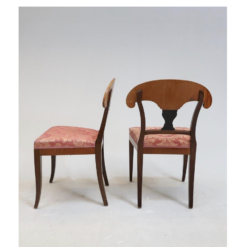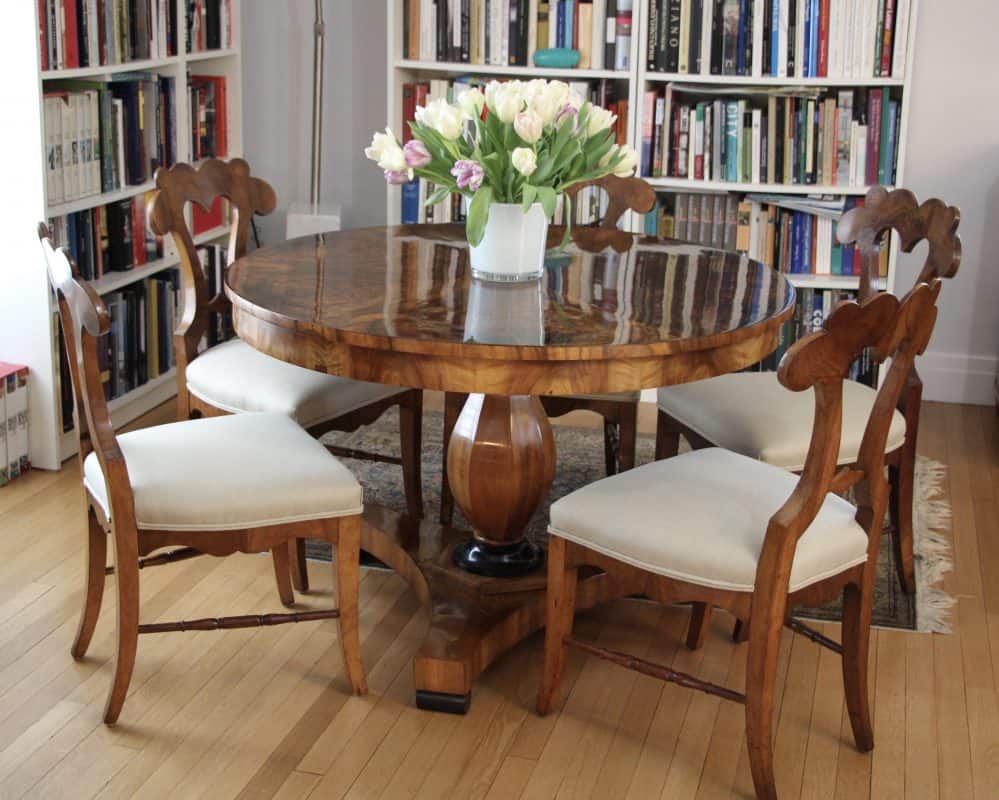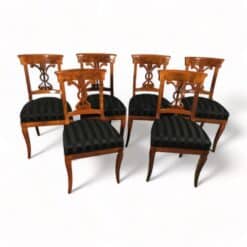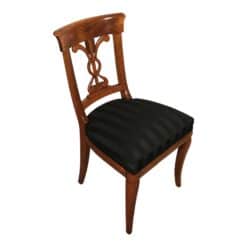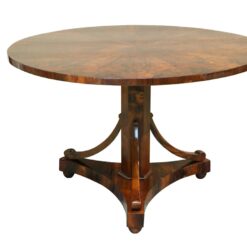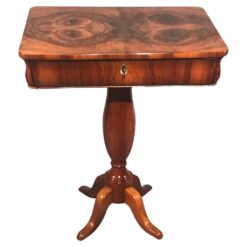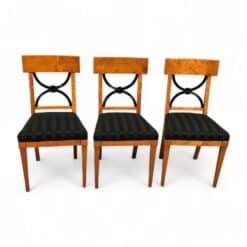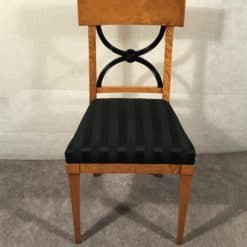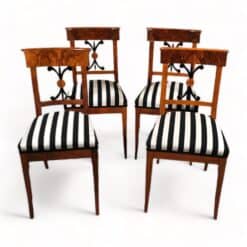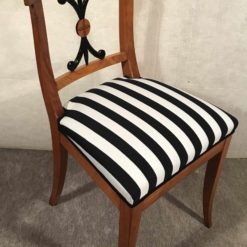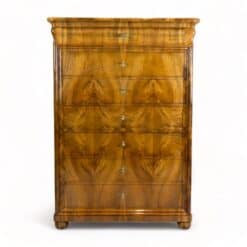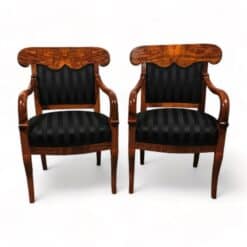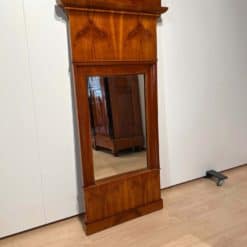Best Sellers
Biedermeier, Furniture, Style, Styylish History
A Place of Gathering: A Closer Look at the Biedermeier Table
Today’s blog focus, the Biedermeier Table, is perhaps the purest expression of Biedermeier design philosophy. It’s well represented in the Styylish catalog. Indeed, of all the wide varieties of products in our carefully selected stock, it’s the style and shape we have the most of.
It’s an exceptionally popular period for tables. That is not only because of their beautiful wood-forward design, but because of their excellent compatibility with any contemporary space.
As a place of communal gathering at the center of a home, no furniture is more engaging and important to Biedermeier period than the table.
That, alone, is reason enough to dedicate a blog to it. For a general introduction to the History and Characteristics of Biedermeier Style or a look at the Biedermeier Table’s close cousin, the Biedermeier Desk, be sure to delve into the various other posts on our blog.
Historical Background
In order to contextualize the Biedermeier Table, it’s useful to take another look at the general historical patterns of the Biedermeier period. The early 19th century was a time of great change in Europe and around the world. That change is implicitly reflected in the Biedermeier style.
A Brief Re-Introduction to Biedermeier Style
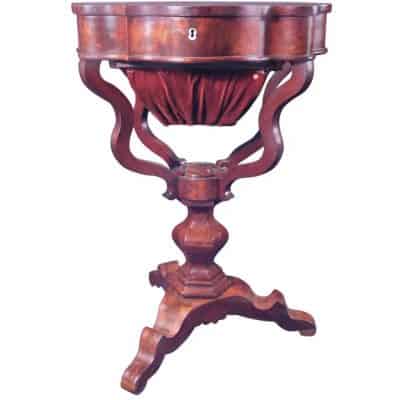
Biedermeier is the furniture style of the middle class that emerged during the Industrial Revolution. An active rejection of the lavish, highly ornate, and expensively decorative furniture styles of the aristocratic 18th century, Biedermeier finds joy in simplicity.
By allowing the natural grain of wood to be the main decorative feature of its furniture, Biedermeier style has a practical, utilitarian core that actually translates into very forward-thinking decorative principles that celebrate simplicity.
Austrian Biedermeier, especially, finds lots of common ground with the much later Art Nouveau style. Both celebrate natural swirls and unornamented wood features with a distinctly refined touch that made them popular far beyond the confines of the middle class.
The Biedermeier Table as a Place for Gathering
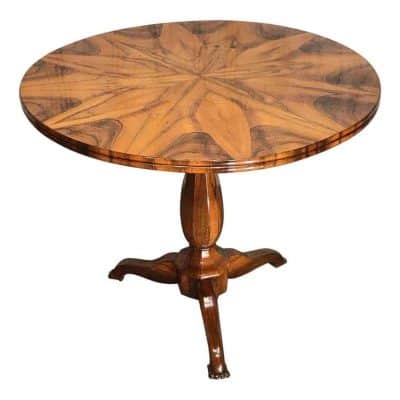
The Biedermeier Table represents the core philosophy of Biedermeier in multiple ways. First and foremost, as a style celebrating the emergence of a new class of society. Biedermeier was the first style that could furnish the home of the newly arising middle class bourgeoisie.
A table as a place for gathering embodies that core principle: celebrating togetherness and non-aristocratic refinement in the round. A site for conversations, a site of thought and debate, a site of exchange: the 19thcentury as a century of revolution in Europe is tied to the table as homely centerpiece.
Secondly, the Biedermeier Table is an often unassuming, though sizeable object that finds its true beauty (from a modern perspective) in the lush wood grain that swirls through its varnished surface. In every exemplar found in the Styylish Catalog, that wood-forward design is a key identifier of what makes a table Biedermeier.
The Biedermeier Table in the Styylish Catalog
To understand the Biedermeier Table as a stand-alone decorative piece, it’s no doubt important to become acquainted with the various ways in which it could be approached by a designer. In the subsequent examples from the Styylish Collection, for instance, you will see a great diversity of objects. They are all brought together by the themes elucidated above.
The Classic Round Biedermeier Table: A Study in Versatility
A table for gathering is a large round table: no one sits at its head to rule over others – everyone around the table is on equal footing. That is key to the Biedermeier philosophy of spreading artisan products to the masses.
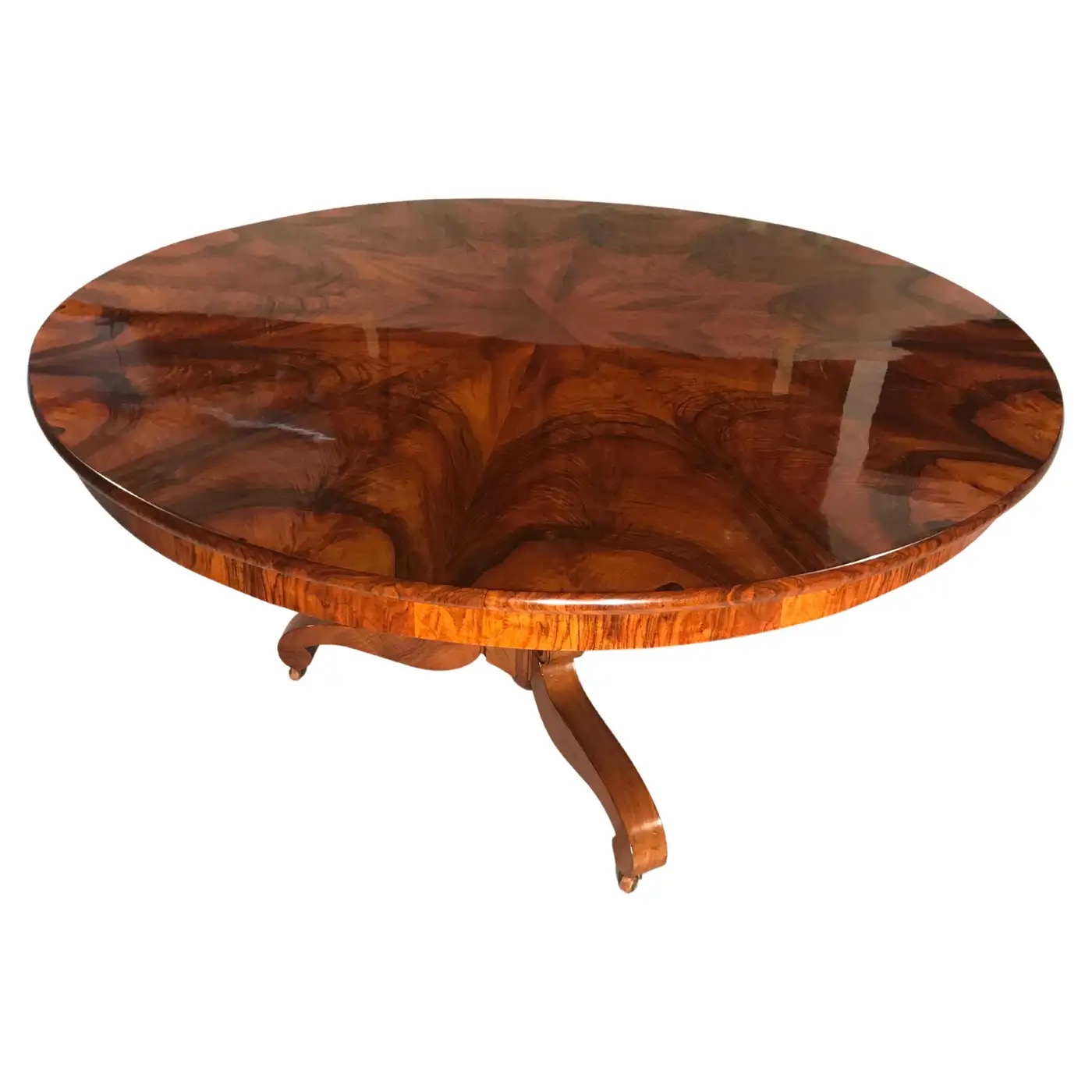
This Biedermeier Table exemplifies why masses and simplicity do not equate shabby commonality. A breathtaking walnut veneer invites comparisons to liquid amber. But the real showstopper is this table’s pedestal foot. A tripod-shaped, walnut veneered base and three slender columns connect beautifully with the walnut veneer on the top.
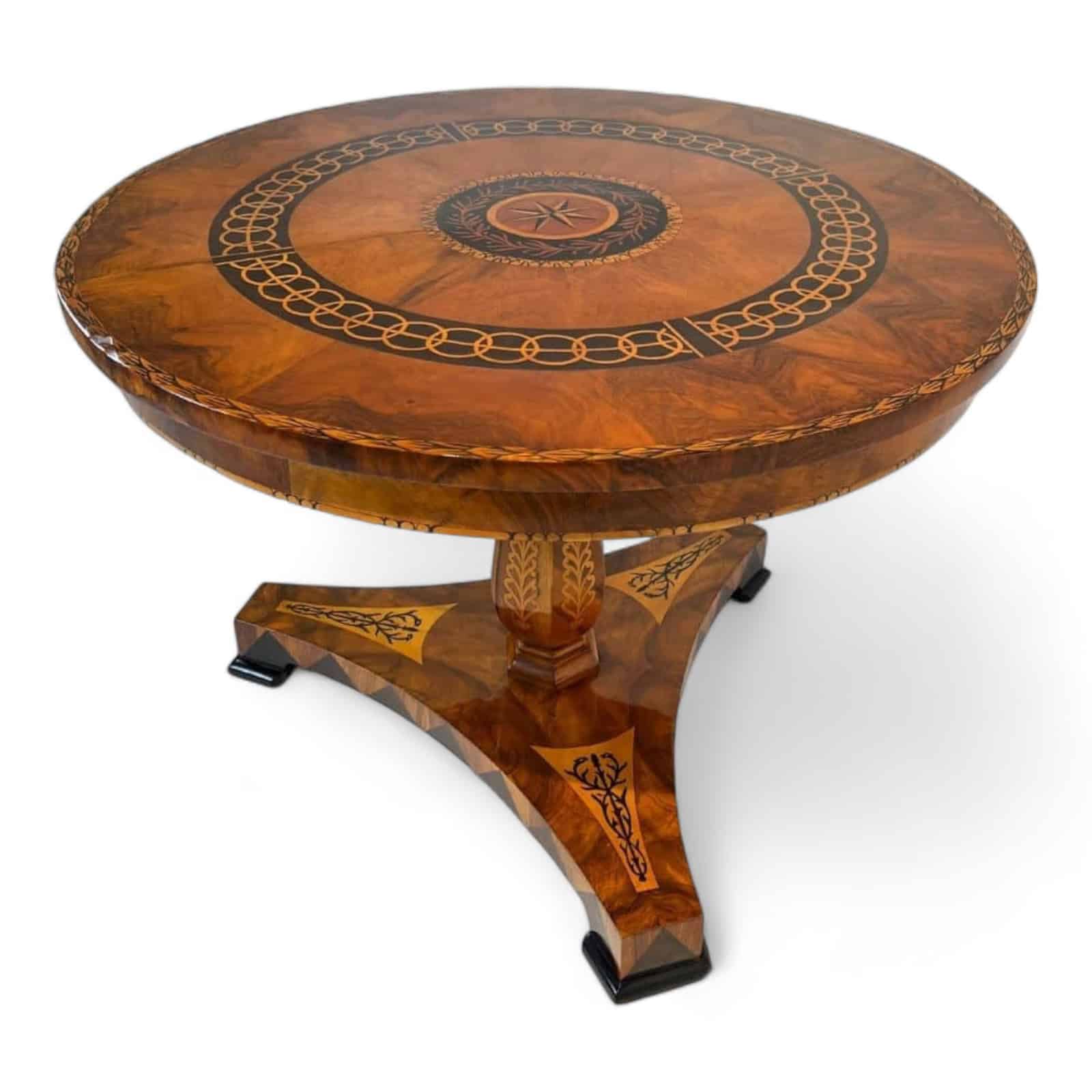
This Biedermeier Walnut Table, on the other hand, has beautifully designed wood inlays . The gorgeous brown elegance of walnut wood and Neoclassical motives lends this table the same kind of refinement one might have expected to find in a 18th century piece. Its sturdy simplicity makes it a distinct exemplar of a Biedermeier Table, however.
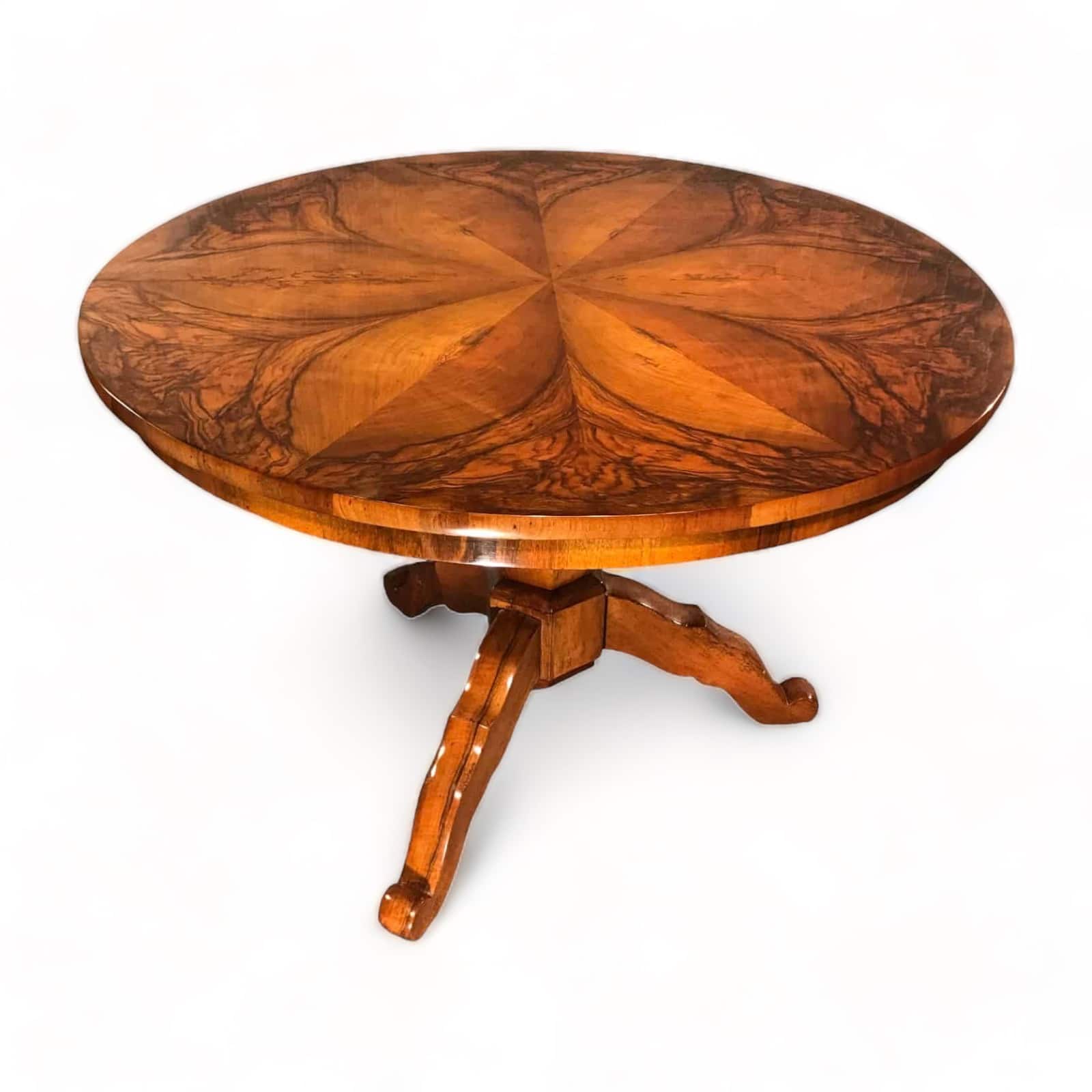
This Biedermeier Dining Table also benefits greatly from the natural grain in the wood veneer. A show-stopping flower seems to blossom on the large circular surface, arranged meticulously by a south German artisan in 1820.
You can practically feel the historical weight this table exudes. And it does not have to be a dining table, though well-suited to be just that. Place it in a well-lit corner of your modern living room, for instance. Then, surround it with engaging accent chairs, matched or mismatched, and see how your space comes to life. You’ll want to take all your card games, teatimes, and chats right to it.
Other Shapes and Sizes
A Biedermeier Table does not have to be large and round, however. There are so many ways in which tables embrace Biedermeier style in sometimes surprising ways.
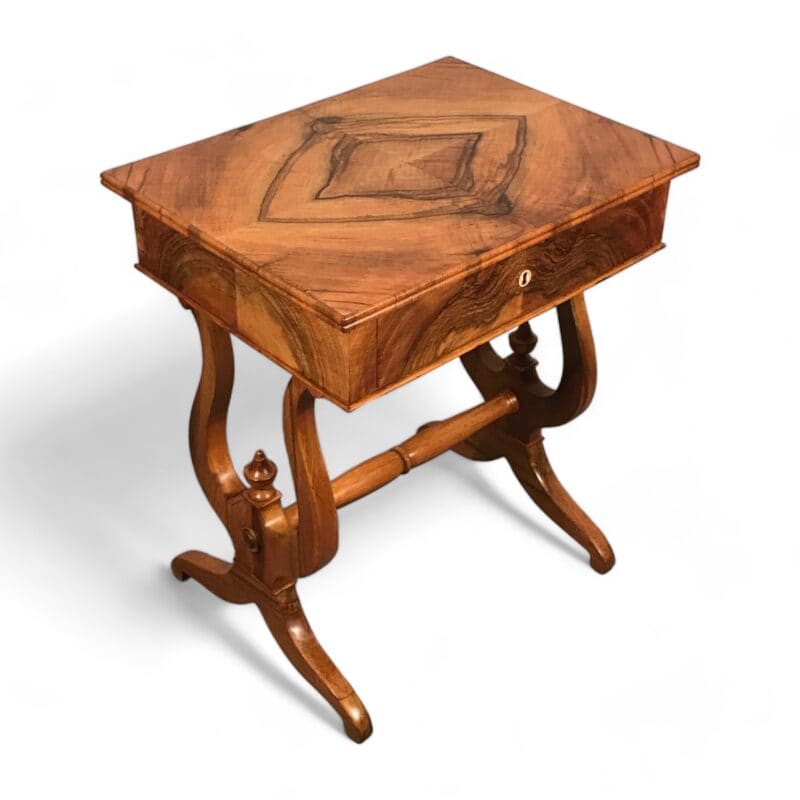
Take this Biedermeier Sewing Table. It’s a beautiful, petite object well-suited for that open wall between windows in your living room, for instance. Apart from the beautiful walnut veneer on its top, it has lyre shaped legs that add a touch of sophistication to this table. It’s a rare find: exceptionally beautiful and deceptively simple.
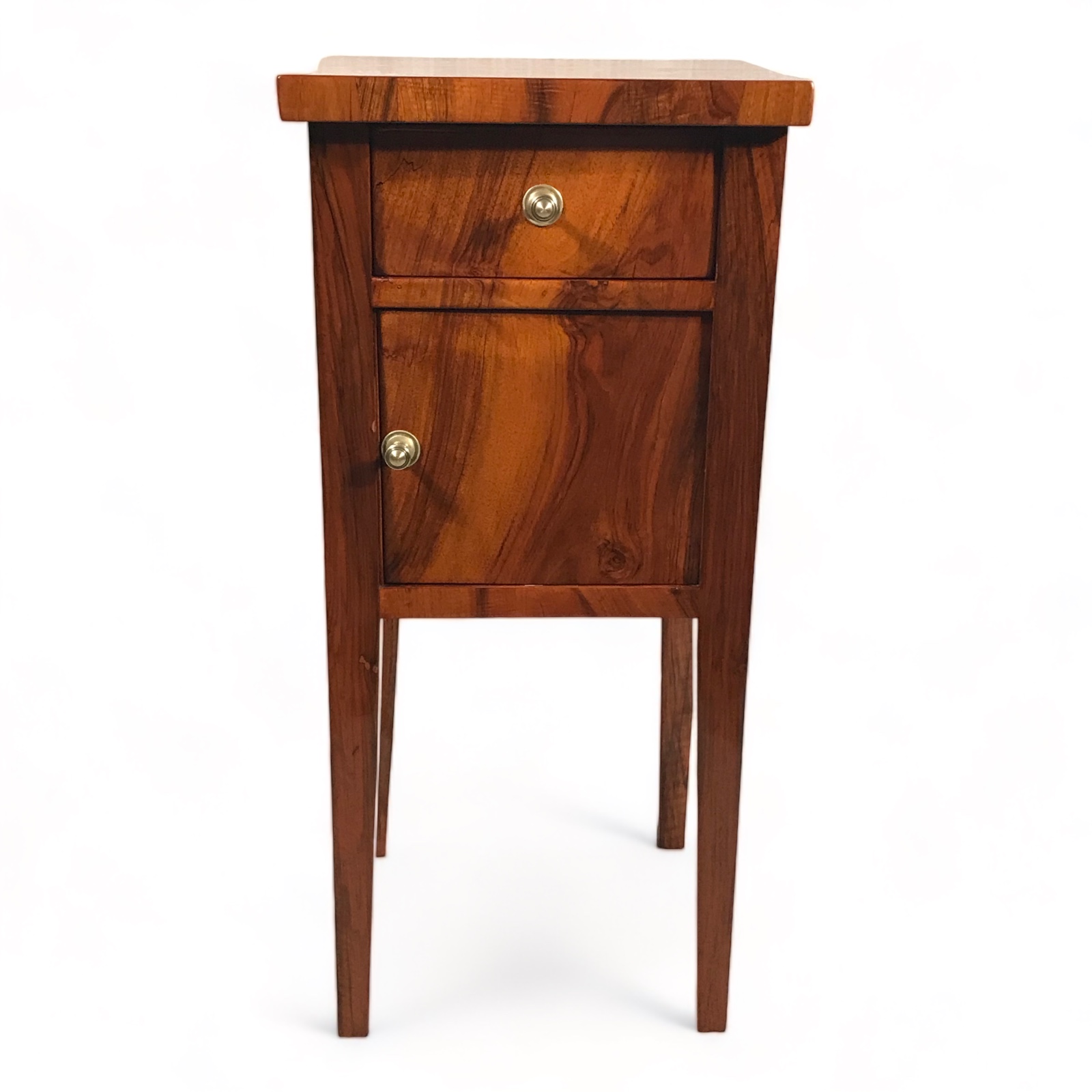
A Biedermeier Nightstand, like this one, finds beauty in its plain design. Featuring a walnut veneer, the square wood-forward design lends itself for a terrific accent next to a contemporary bed frame or as an end table next to a modern sofa. Place a contemporary glass lamp on top to bring even more contrast to the elegant walnut veneer.
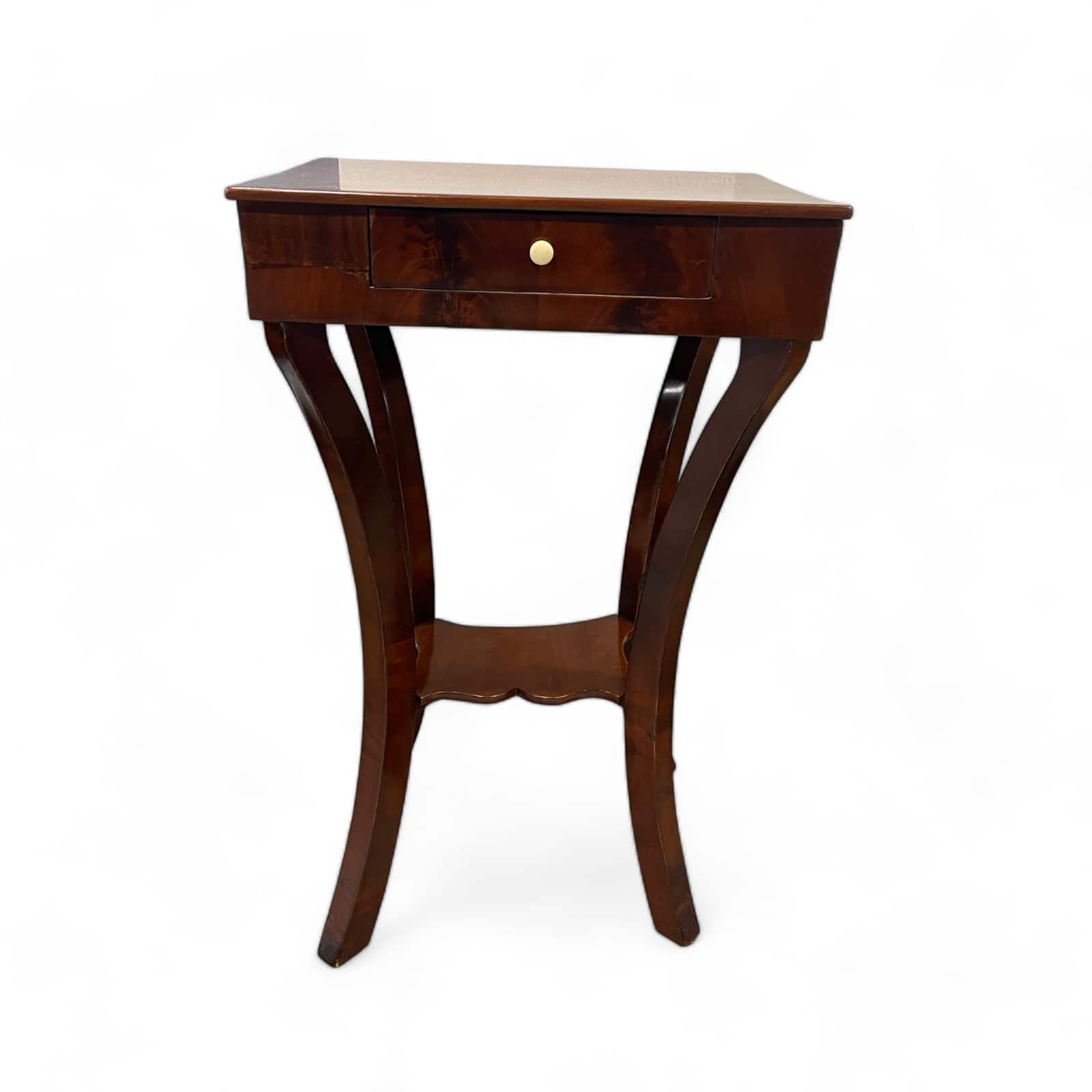
Or let this elegant Biedermeier Side Table be the last piece of your bedroom puzzle. The mahogany table can be the ideal addition as a nightstand or side table, with moments of real elegance hidden in every detail. It’s the perfect antique addition to an otherwise modern space.
Remaking Your Home with a Biedermeier Table
There’s only one way to summarize the story of the Biedermeier Table: possibilities. Just as it emerged as a site for gathering, decoration, and functional beauty, so it remains a place of rediscovery and antique refinement. You’ll be surprised at how well a Biedermeier Table goes with everything in your home. Let it accent your space in exciting, new ways.

